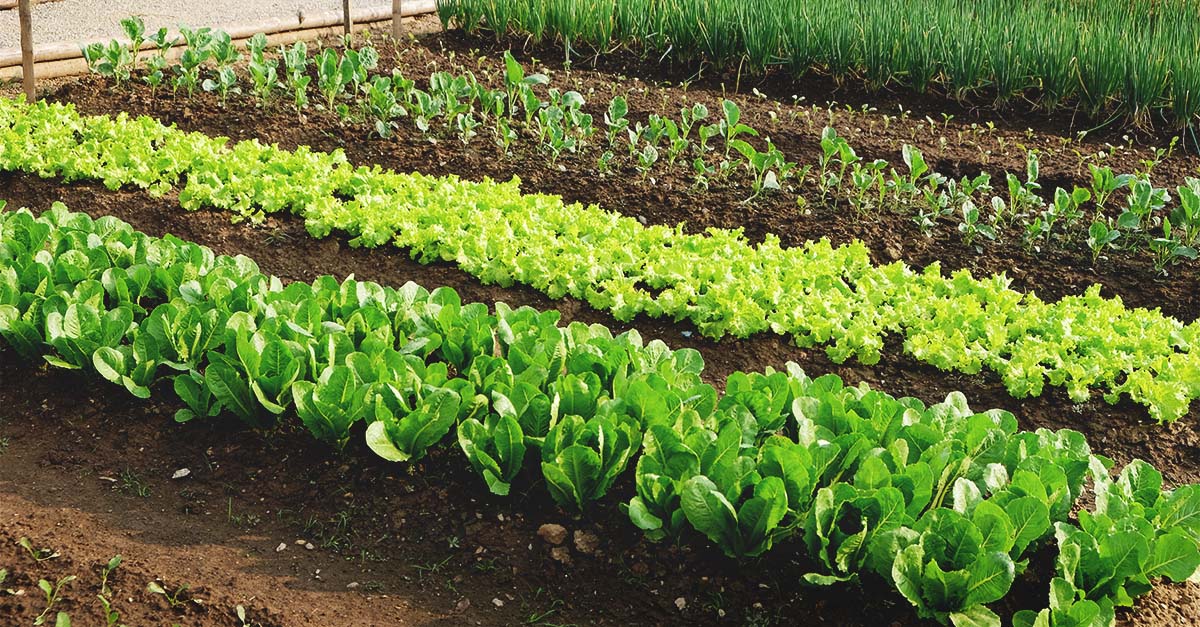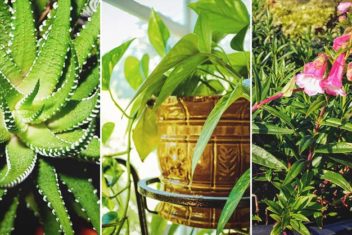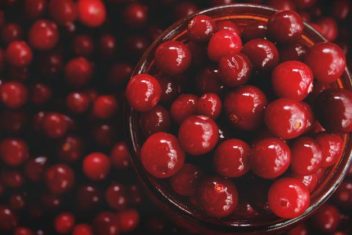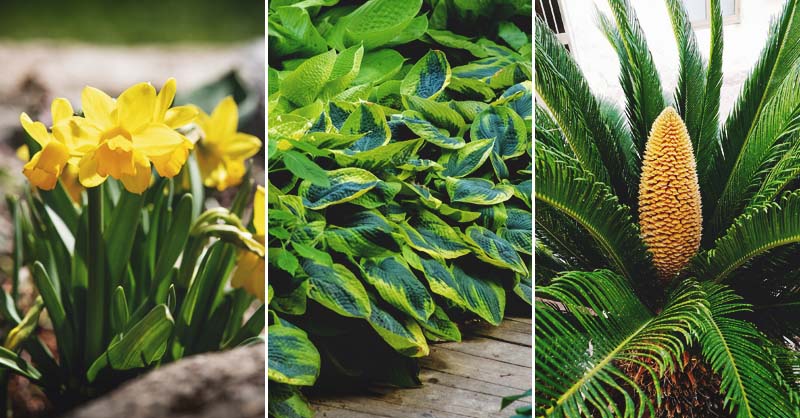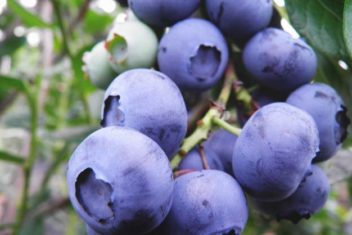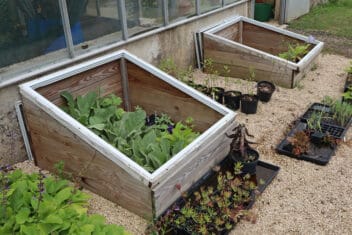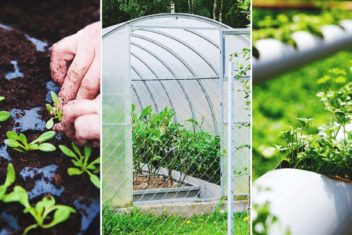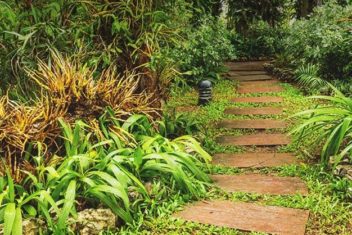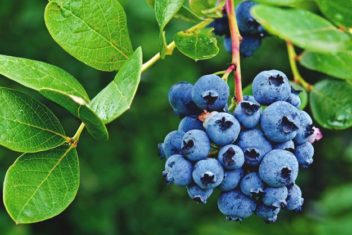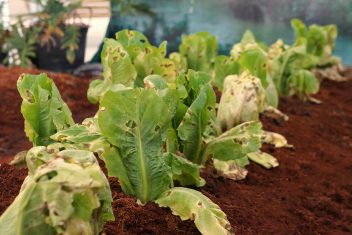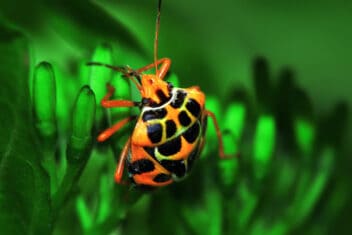Last year we had so much rain in our area that for months, farmers in my area had a hard time growing full-sized produce to sell at local markets. Things were just taking too long to mature. So farmers harvested baby vegetables early just to be able to have something to offer their customers.
Frankly, growing baby vegetables is a great strategy in a tough gardening year. But even when the weather is not bad, there are some important reasons why homesteaders should grow baby vegetables on purpose.
If baby veggies aren’t already part of your garden plan, then read on for more details on why you should add them and how to do it effectively.
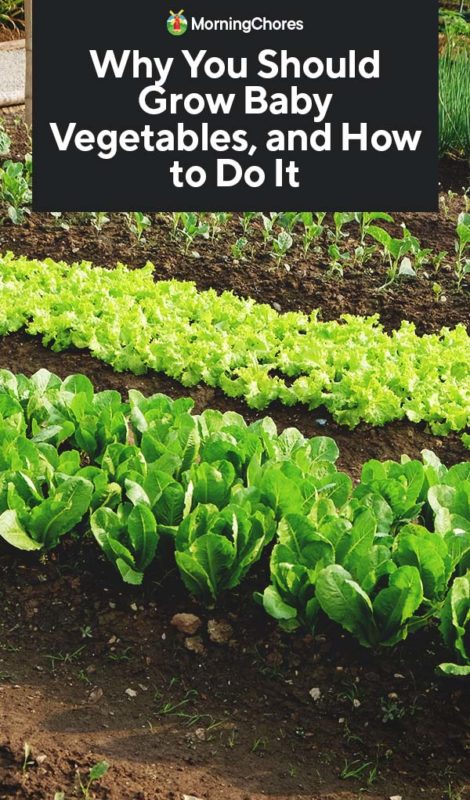
About Baby Veggies
Baby vegetables are vegetables harvested in an immature state or dwarf varieties of the plant. Not all vegetables can be grown as baby vegetables. But there is a lot that can. The key to determining which vegetables make good early harvests is how they taste.
The Taste Test
A giant heirloom tomato could be harvested when it is the size of a green grape. But, it won’t have developed enough flavor by that point to be worth harvesting young. That’s why we have other tomato varieties that produce baby-sized tomatoes that are full of flavor.
A carrot, by contrast, tastes pretty much like a carrot as soon as it is about pencil thick. Before then, it actually still tastes like a carrot. There’s just not enough there to really do anything with it.
Generally, the taste of vegetables worth harvesting in their juvenile state is going to be similar to the mature plant. However, they might be a bit milder, with less bitterness. In some cases, such as baby vegetables that are grown in cool weather, they can even be sweeter than their older, more weathered versions would be.
Roots
Most annual root crops can be grown as baby veggies. Carrots, turnips, radish, beets, potatoes, kohlrabi, onions, and more are all great options to harvest before they grow to full size. In fact, the only roots I can think of that aren’t useful as baby vegetables are sweet potatoes and garlic.
Greens
Just about every kind of green will be tasty when harvested young. Even plants that are usually grown for their large heads like cabbage, radicchio, and heading lettuce make great baby vegetables. My personal favorites for baby greens are any kind of mustard or lettuce, arugula, mache, and bok or pok Choy.
Weedy Greens
I also like to harvest baby greens from some of the “weeds” (otherwise known as plants out of place) that show up in my garden. Lambs quarters, chickweed, purslane, and cresses are my favorites for this. The really cool thing about using weedy greens in their baby form is that you are both weeding and feeding yourself at the same time!
Herbs
Lots of the things that fall into the herb class also taste great when harvested young. Fennel, for example, is something I love to grow gobs of and then harvest well before the plants mature. Dill, coriander, fenugreek, are a few more of my favorite baby herbs.
6 Great Reasons to Grow Baby Vegetables
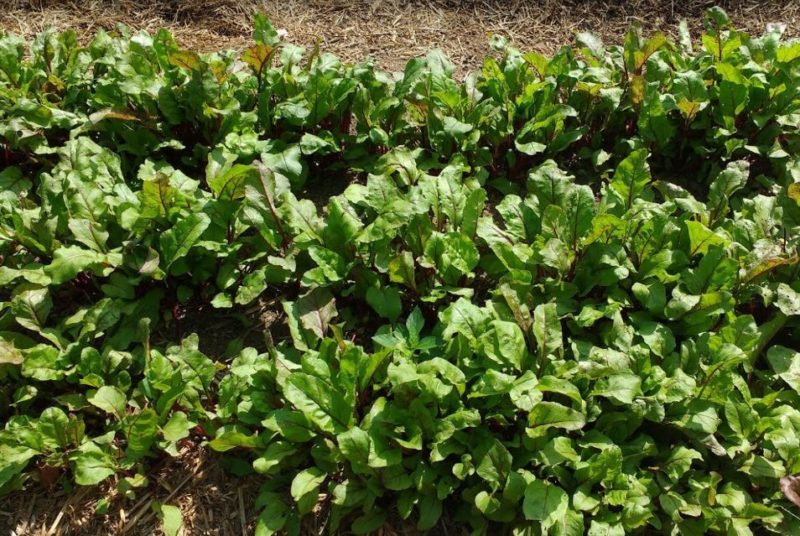
Now that you have some ideas of what can be grown to be harvested young, let me give you a few reasons why it’s a great idea to do this.
Reason 1: Multiple Harvests
A full-sized beet can take 60-70 days to mature. The same variety of baby beets can be ready in about 40-50 days. That’s not a huge time difference for beets. But, if you have a 120 day growing season, you could get three or four rotations of baby crops instead of struggling to get two rounds of full-sized beets.
With greens and herbs, the returns are much quicker. You can have large amounts of baby greens or tasty herbs for salads and stir-fries in just a couple of weeks. Also, with baby greens, the young roots still have so much desire to grow, that as long as you leave a little leaf growth above ground, they’ll regrow quickly for multiple harvests.
Reason 2: Tastier Tops
Those beets I mentioned in Reason 1 also have very tasty tops. The older the plant, though, the more damage the leaves sustain and the less tasty and aesthetically appealing they are to eat.
Young plants have young greens that aren’t tainted with the bitterness of being beaten down by hard days and nights. The same is true for turnips, kohlrabi, radish, and more. So, if you harvest early, you can also use your young plant tops as greens to increase your yields.
Reason 3: Great for New Gardens
If you have a new garden and are just beginning to improve your soil, you might have a hard time growing mature plants. If your soil isn’t deep enough, plants can be stunted by your shallow soil.
When you grow baby vegetables, they have shallower root systems at the time of harvest. They tend to take their nutrients from the top 4 inches of soil. So, even if your soil isn’t 8-12 inches deep as it should be for best yields, you can still have a super productive garden in the meantime.
Reason 4: Loves Crowds
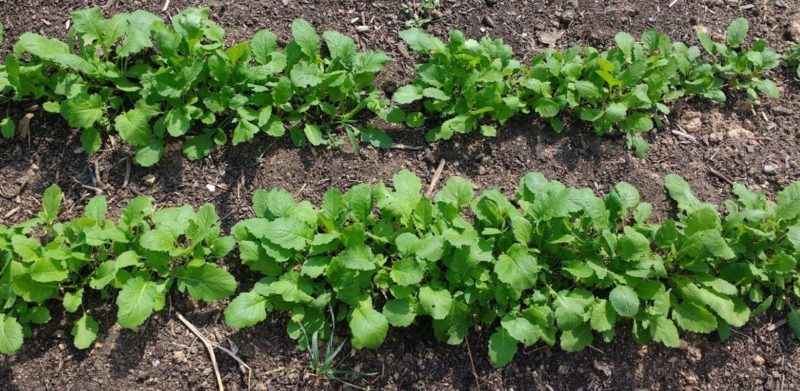
I discovered I could grow 6 baby beets in a 4-inch pot. Those baby beets collectively weigh more than the biggest full-sized beet I can grow in a 6-inch pot. This has proved true across all my tests to grow baby vegetables.
That means you can actually get more food by weight by growing baby veggies and use less space. I don’t entirely understand why this works. But my theory is that the roots of younger plants might just be a bit better at scavenging nutrients.
Reason 5: Less Weather Stress
Another advantage of growing baby vegetables is that if you plan it right, your plants won’t have to tolerate temperature swings and pathogen pressures that stress out longer grown plants.
For example, in my area, May and early June are consistently frost free, but not at all hot. The end of June and July, though, can look like a roller coaster in terms of temperatures oscillating between warm and scorching. By growing baby crops and harvesting before those intermittent scorchers set in, the plants grow better because they don’t suffer heat stress.
Also, warmer temperatures paired with humidity are the perfect conditions for pathogens like powdery mildew to severely stunt plant growth. If you can get your plants grown before temperatures settle between 70-85ºF, you can minimize that risk dramatically.
Baby plants take less time to grow. As such, they can be harvested before these natural stressors set it. Then, you can also enjoy less stress in the garden.
Reason 6: Pass on the Pests
Similar to reason 5, planting baby crops can help prevent pest problems. Pests and plants co-evolve. This is why pests always seem to arrive just in time to get your crops before you do. Nature made them that way!
If you can get your crops grown before the pests arrive in full force, then you don’t even have to deal with them. Plus, by not having their preferred crop around when they do arrive, pests go elsewhere. Or else, the pests don’t survive to breed for the next season.
In other words, growing baby greens not only helps you reduce pest pressure. They also help you reduce pests if used strategically.
6 Tips for Growing Baby Vegetables Successfully
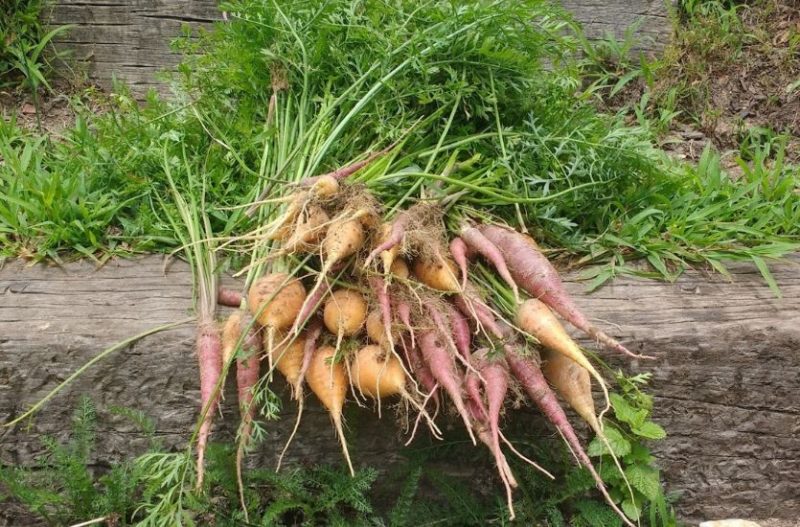
Now that you have some good reasons to grow baby greens on purpose, there are a few techniques that will make getting good yields easier.
Tip 1: Over Plant
As I mentioned before, you can plant more baby plants in the same space or less than you would full-sized plants. It’s also really important that you do.
Baby plants have shallow roots that can dry out easily. They don’t have enough leaf mass for most of their life to crowd out weeds. Plus, not all young plants make it.
By planting more baby vegetables, close together, you can overcome all of these challenges. Closer plantings means more leaf mass to cover the soil and keep it moist. More leaves also means more weed prevention power to crowd out unwanted competitors.
Also, by planting more, if you lose a few to garden pests or damping off, it’s no big deal, you’ve got plenty more growing.
Tip 2: Time Your Harvest
One of the downsides of baby vegetables is that they don’t store as long as mature vegetables because they lose moisture faster. So, if you want to make a baby vegetable soup to can or freeze, you’ll need your potatoes, beets, onions, carrots, and other ingredients available at the same time.
Think ahead to how you’ll be using those veggies and try to target your harvest times for the same approximate finish date. This can be a bit tricky until you know how long it takes for your favorite varieties to be ready to harvest at the baby size you like.
But as a starting point, you can harvest baby greens in about half the time as mature greens. Roots usually start slow then pick up speed at the end of their growing. So, there you can usually cut your harvest time by 15-25% of the normal growing period.
Tip 3: Baby Daycare
Mature vegetables have more tolerance for drought, heat, cold, wind, and other environmental factors. Baby vegetables are a bit more fragile.
Now, this isn’t actually a downside because even if you were growing your vegetables to mature size, you’d need to give them extra care in the early days. But if you really want to get faster production to turn your garden multiple times, you’ll want to make sure to give these plants daily care.
The soil should never crust. Water as needed to maintain moisture in the top four inches of soil.
Use things like compost tea or organic liquid fertilizer to ensure your baby veggies stay healthy. Weed carefully without disturbing delicate plant roots. Protect from cold and wind. Offer shade in extreme heat.
Basically… you want to baby your baby veggies until harvest time.
Tip 4: Buy in Bulk

You’ll need more seeds to produce similar vegetable weights from baby veggies as you could get from mature plants. Save yourself some money and buy the bulk seed packs at the start. If they offer seeds in ounces, go that route.
If you happen to end up with extra seeds at the end of season, you can store them for next year or continue to grow them as microgreens indoors.
Tip 5: Mix and Match
Now, here’s the best part about growing baby greens. You can still grow mature versions in the exact same space. All you need to do is harvest your babies and leave some in place to keep on growing.
For example, if you grow 6 beets together, harvest 5 baby beets and let the 6th beet keep on growing to full size. To do this, work the bulb free from the soil, then cut the tail of the root and leave it in the ground. This way you’ll cause less disturbance for the last beet standing.
For greens, just cut the majority of greens to the soil level. Then, leave some properly spaced greens behind with 1 inch of greens above ground to keep on growing.
For carrots, they barely notice root disturbance. Just push the soil back around the left-behind carrots.
In all instances, water and give plants a little compost tea to help them recover from the soil disturbance and the loss of their garden companions. Then care for them as you normally would until harvest.
Tip 6: Succession Plant
If you have the climate for it, start new sections of baby veggies every 2-3 weeks throughout the growing season. That way you’ll have a continuous harvest all season long.
You may lose some of the benefits of harvesting before bad weather and pests. But, you can make up the difference by planting seasonally appropriate varieties and giving them great baby daycare.
Essentially, you can plan your baby veggies just like you would your mature plants using cold hardy versions in spring and fall and heat-tolerant varieties in summer. Use pest or pathogen-resistant varieties as necessary too.
Baby Veggie Patch Beginnings
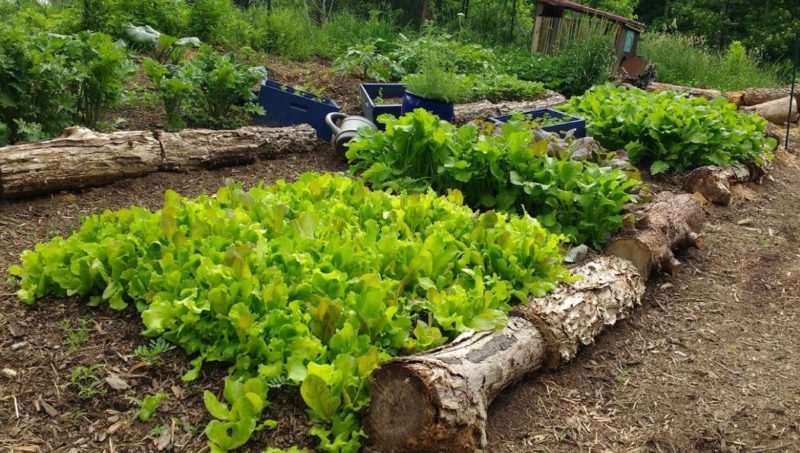
Even though baby vegetables are super easy to grow, it actually takes a pretty mature gardener to manage the planting, harvesting, and continued use of these small-sized staples of the homestead garden.
So don’t be afraid to take baby steps. Start with a 4 x 4 foot area with a section of space. Then plant the baby veggie classics like carrots, beets, bok choy, spinach, and mesclun mix.
If you are like me, you may find your baby veggie areas getting bigger and bigger each year as your skills grow. Eventually (and ironically), you may find yourself with a full-grown baby garden of your very own!
